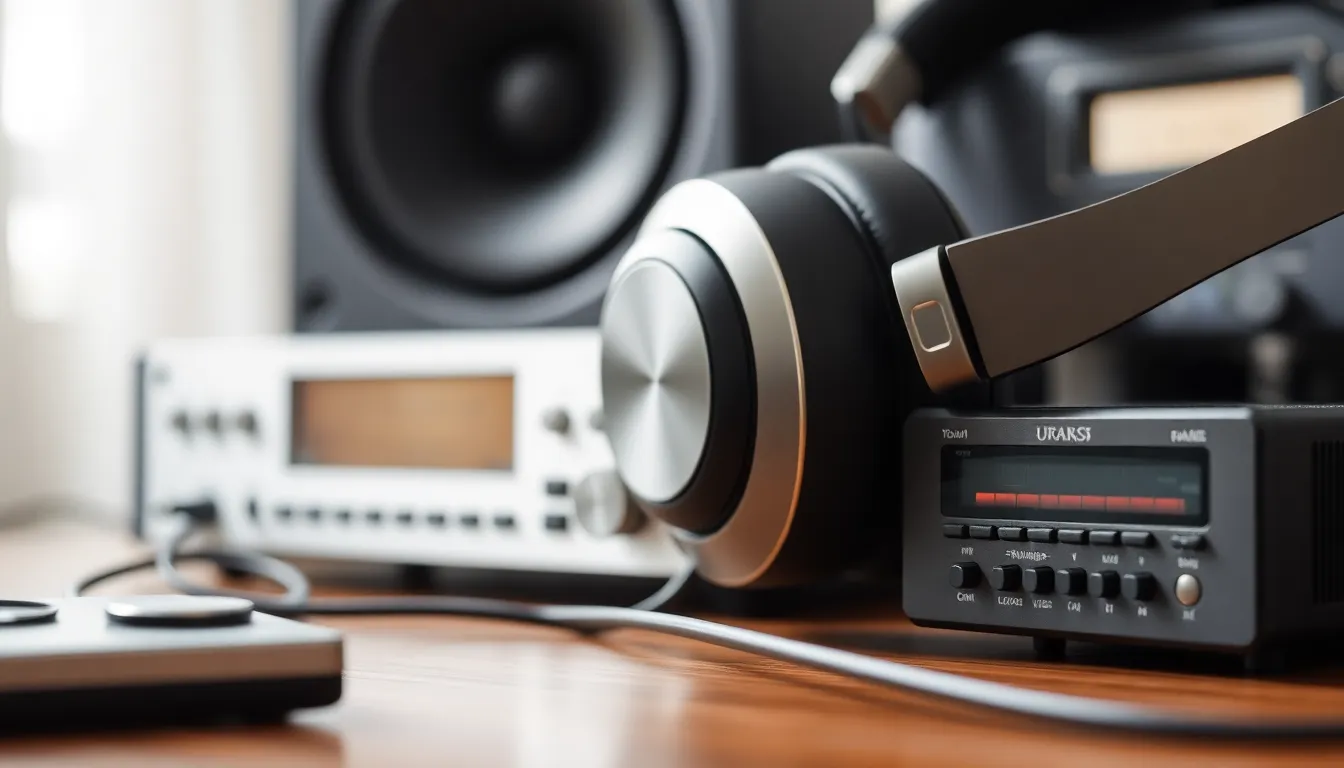In a world where music often gets compressed into a tiny digital burrito, lossless streaming services are the gourmet tacos of the audio universe. They serve up sound that’s as rich and full as a symphony, allowing listeners to experience every note, every nuance, and every delicious detail. If you’ve ever cranked up your favorite track and felt something was missing, it’s time to dive into the world of lossless streaming.
Imagine listening to your favorite album and feeling like you’re front row at a concert, minus the overpriced drinks and questionable bathroom lines. With lossless streaming, audiophiles and casual listeners alike can enjoy high-quality sound that makes every beat pop. So, whether you’re a serious music buff or just someone who loves to jam out in the shower, it’s time to upgrade your listening experience and discover what you’ve been missing.
Table of Contents
ToggleOverview of Lossless Streaming Services
Lossless streaming services provide high-fidelity audio, delivering sound quality that remains true to the original recording. Users experience music without the compression artifacts common in standard streaming formats. These services cater to various audiences, from audiophiles to casual listeners looking for a richer experience.
Various platforms offer lossless options, including Tidal, Qobuz, and Amazon Music HD. Tidal features a HiFi tier that streams music in FLAC format, allowing listeners to appreciate subtle details. Qobuz also emphasizes high-resolution audio, providing an extensive catalog of lossless tracks. Amazon Music HD offers a diverse selection, making it easy for users to transition to lossless audio.
Quality matters significantly to those who value sonic fidelity. With lossless streaming, listeners can detect nuances and textures in music that enrich their listening experience. This technology closely aligns with the desire for authentic sound, simulating a live performance’s atmosphere.
Pricing varies among services. Many platforms charge a premium for lossless tiers, yet they attract users with extensive catalogs and exclusive content. Trial periods often allow potential subscribers to evaluate sound quality and library depth before making a commitment.
Overall, lossless streaming services enhance how users consume music. By prioritizing audio fidelity, these platforms elevate listening experiences, transforming how they appreciate their favorite artists.
Benefits of Lossless Streaming

Lossless streaming provides numerous advantages, significantly enhancing the listening experience. Improved audio fidelity and the authentic representation of sound set these services apart.
Superior Audio Quality
Listeners enjoy superior audio quality with lossless streaming services. Sound clarity surpasses that of compressed formats, allowing details to shine through. Audiophiles and casual listeners alike appreciate the richness in bass, midrange, and treble. Many streaming platforms maintain resolution levels of at least 16-bit/44.1kHz, ensuring a vibrant soundstage. Users frequently report feelings of immersion, akin to being present at live performances. This heightened acoustic experience elevates music appreciation.
Preservation of Original Sound
Preservation of original sound characterizes lossless streaming services. These platforms deliver audio that mirrors the initial recording quality. Unlike lossy formats, lossless formats eliminate compression artifacts that detract from listening. Musicians’ intent comes alive, enabling listeners to connect more deeply with the music. Subtle nuances and texture details emerge, highlighting the artistry involved in recordings. As a result, users can experience each track as the artists envisioned, making it a rewarding choice for true music lovers.
Popular Lossless Streaming Services
Several streaming services offer lossless audio options. They provide high-fidelity sound that appeals to both audiophiles and casual listeners.
Tidal
Tidal tops the list with its extensive catalog and commitment to high-quality sound. Users experience lossless audio streaming with a resolution of up to 24-bit/192kHz, making every note resonate. Additionally, Tidal features curated playlists and exclusive content, enhancing the overall listening experience. Artists benefit from Tidal’s higher payout structure, fostering a connection between creators and fans.
Qobuz
Qobuz stands out for its focus on high-resolution audio and rich metadata. The platform offers streaming capabilities up to 24-bit/192kHz. Audiophiles appreciate its vast library, featuring a wide range of genres and exclusive recordings. Moreover, Qobuz provides in-depth editorial content, with album reviews that enrich the user’s understanding of music.
Amazon Music HD
Amazon Music HD caters to a broad audience with its extensive music library and high-quality offerings. Subscribers access over 70 million lossless tracks, including HD and Ultra HD options. Clarity and detail define the listening experience on this platform. Plus, Amazon Music HD integrates seamlessly with Amazon Echo devices, allowing for high-quality music playback across various settings.
Comparison with Lossy Streaming Services
Lossless streaming services offer a marked contrast to lossy streaming options. Listeners can experience rich audio quality that lossy formats typically compromise, emphasizing clarity across all frequency ranges.
Sound Quality Differences
Lossless streaming preserves every detail of a recording, providing accuracy that enhances enjoyment. Audiophiles appreciate how this format captures nuances in complex compositions, resulting in an immersive experience. In comparison, lossy formats remove certain audio data to save space, often leading to noticeable artifacts and diminished fidelity. Users might find that aspects like bass response and the presence of instruments lose their essence when using lossy audio, creating a flat listening experience. Favoring higher resolution keeps the sound vibrant and true to the original intent of artists.
Data Usage Considerations
Data consumption presents another critical distinction between lossless and lossy services. Lossless audio consumes significantly more data, often reaching 1GB per hour of playback, while lossy formats typically use around 150MB for the same duration. Streaming lossless content requires robust internet connections to avoid buffering interruptions. Users with limited data plans or slower connections might prefer lossy formats to manage their bandwidth effectively. Balancing sound quality and data usage remains essential for listeners who want the best of both worlds, as each choice directly impacts overall audio experience.
Exploring lossless streaming services opens up a world of rich audio experiences that resonate with both casual listeners and dedicated audiophiles. These platforms deliver sound quality that captures the essence of music, allowing every note and nuance to shine. With options like Tidal, Qobuz, and Amazon Music HD, users can easily find a service that meets their needs and preferences.
As the demand for high-fidelity audio continues to grow, embracing lossless streaming can transform how individuals connect with their favorite artists. While it may require a bit more data, the rewards in sound quality are undeniable. Ultimately, making the switch to lossless streaming enhances the overall music experience, bringing listeners closer to the original recordings than ever before.





